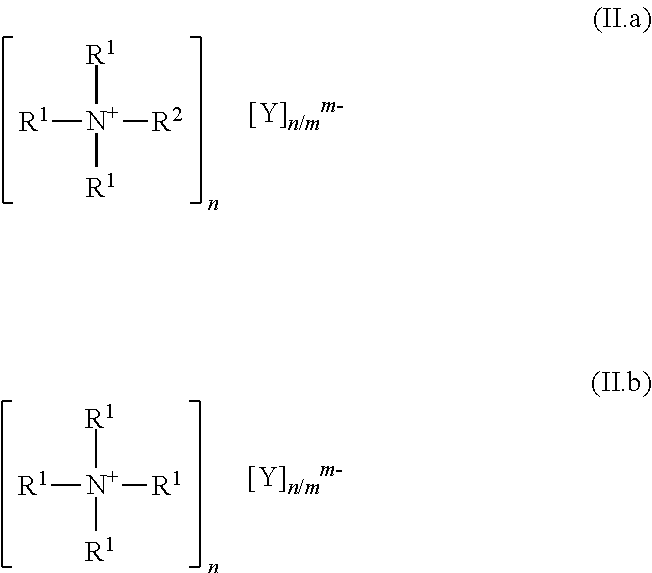Process for preparing 1,4-bis(ethoxymethyl)cyclohexane
a technology of cyclohexane and di-ether, which is applied in the field of process for preparing 1,4bis (ethoxymethyl) cyclohexane, can solve the problems of difficult preparation of di-ethers of 1,4-bis(hydroxymethyl)cyclohexane, formation of significant amounts of mono-ether species, and high yield and selectivity. , the effect of avoiding the use of highly flammable and/or expensive reagents
- Summary
- Abstract
- Description
- Claims
- Application Information
AI Technical Summary
Benefits of technology
Problems solved by technology
Method used
Image
Examples
example 1
Production of 1,4-bis(ethoxymethyl)cyclohexane from 1,4-bis(hydroxymethyl)cyclohexane with ethyl chloride
[0087]Diol (18 g, 125 mmol), NaOH (35% aq., 57 g, 500 mmol) and tetra-n-butylammoniumbromide (4.02 g) were charged into an autoclave and stirred at 70° C. for 1 h. The reaction was cooled to room temperature and ethyl chloride (50.6 g, 784 mmol) was added as a gas to the vessel. The temperature was once again raised to 70° C., creating an internal pressure of 5.9-9.6 bar. After 8 h, the reaction was cooled to room temperature, the pressure was slowly released and the autoclave flushed with N2.
[0088]The phases were separated and the organic phase analyzed.
Conversion: 99%
Selectivity (diether): 80%
Selectivity (monoether): 20%
PUM
| Property | Measurement | Unit |
|---|---|---|
| molar ratio | aaaaa | aaaaa |
| temperature | aaaaa | aaaaa |
| pressure | aaaaa | aaaaa |
Abstract
Description
Claims
Application Information
 Login to View More
Login to View More - R&D
- Intellectual Property
- Life Sciences
- Materials
- Tech Scout
- Unparalleled Data Quality
- Higher Quality Content
- 60% Fewer Hallucinations
Browse by: Latest US Patents, China's latest patents, Technical Efficacy Thesaurus, Application Domain, Technology Topic, Popular Technical Reports.
© 2025 PatSnap. All rights reserved.Legal|Privacy policy|Modern Slavery Act Transparency Statement|Sitemap|About US| Contact US: help@patsnap.com


